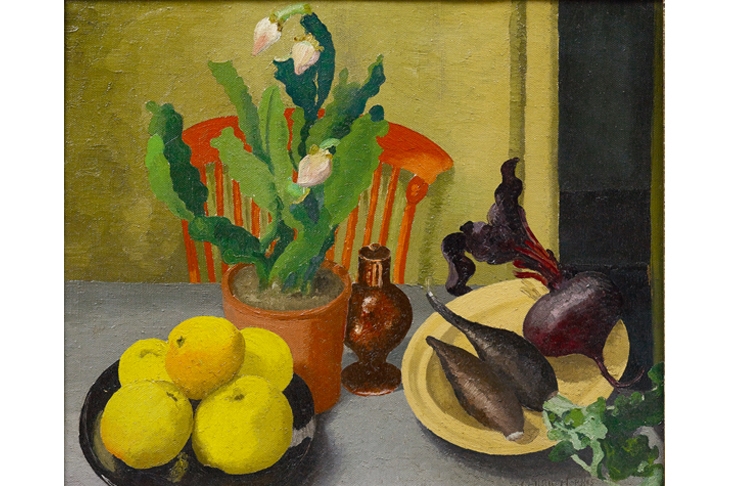I have occasionally mused that there is plenty of scope for a Tate East Anglia — a pendant on the other side of the country to Tate St Ives. If ever that fantasy came to pass, the collection would include — in addition to Grayson Perry, Edward Bawden, Eric Ravilious, and John Wonnacott, contemporary master of the Thames Estuary — a section on Sir Cedric Lockwood Morris.
The more one delves into the history of modern art in Britain — indeed, into art history in general — the more one discovers that many reputations are still free-floating. Morris’s is certainly one of these: there is no consensus as to how good he was as a painter, nor as to how he fits into the wider story. Currently, three small-scale exhibitions — at the Garden Museum, Philip Mould & Company and Gainsborough’s House, Sudbury — help answer those questions. Even taken together they don’t add up to a full retrospective, but they do give quite a few clues.
For the second half of his long life, Morris (1889–1982), though a Welsh baronet in origin, was based in southern Suffolk and northern Essex. There, from 1937, he ran a private and highly unorthodox institution with his partner, Arthur Lett-Haines: the East Anglian School of Painting and Drawing. After its premises in Dedham were burnt down in 1939 — possibly as a result of the star student, Lucian Freud, leaving a smouldering cigarette on his easel — this was relocated to Morris and Lett-Haines’s rustic dwelling, Benton End Farm near Hadleigh.
Despite the name, it would be misleading to describe theirs as a typically East Anglian ménage, except architecturally. Rather, it was an outpost of post-impressionist France, with its sexual unconventionality and aesthetic fastidiousness, transported into Constable country.








Comments
Join the debate for just £1 a month
Be part of the conversation with other Spectator readers by getting your first three months for £3.
UNLOCK ACCESS Just £1 a monthAlready a subscriber? Log in